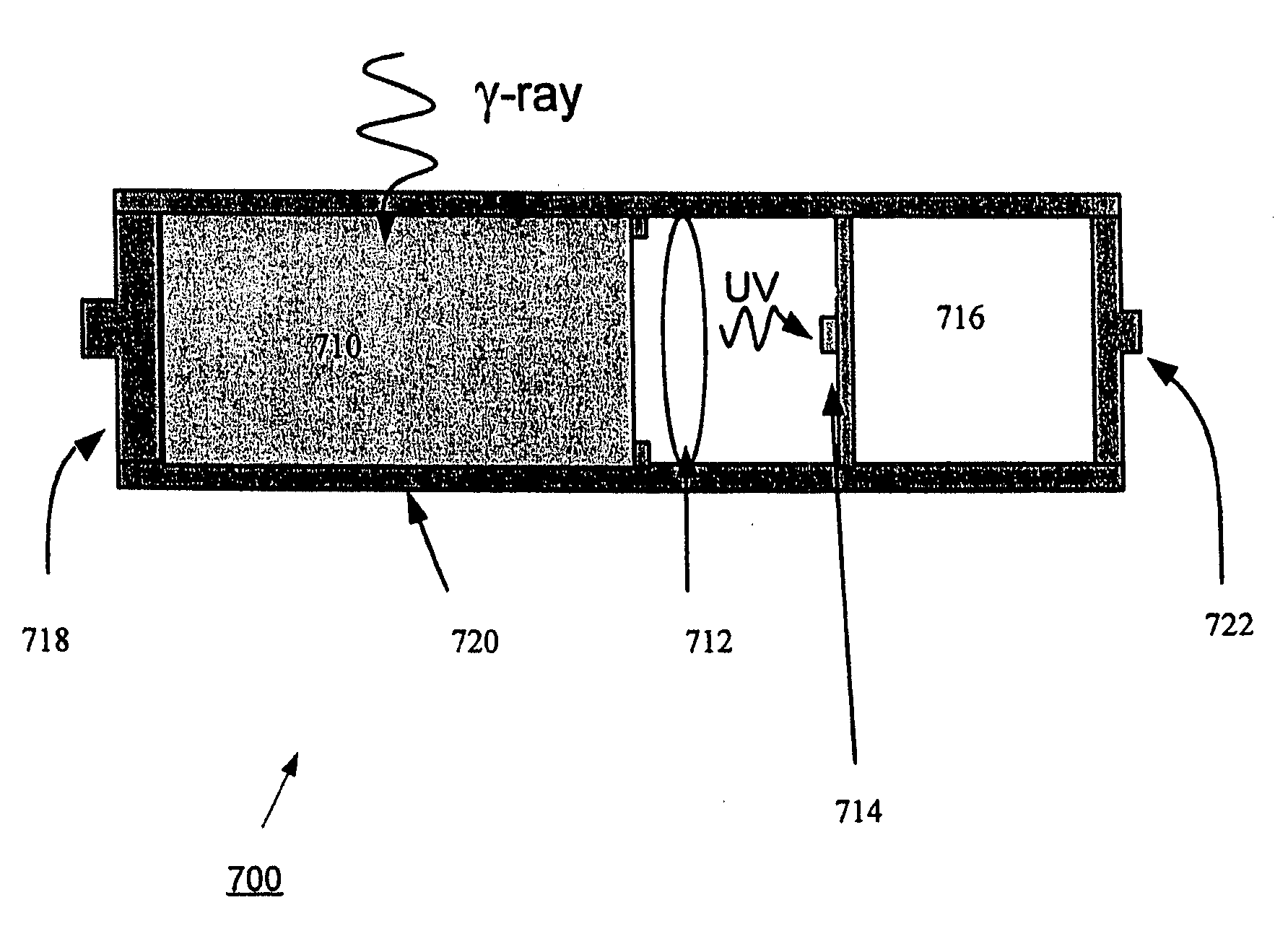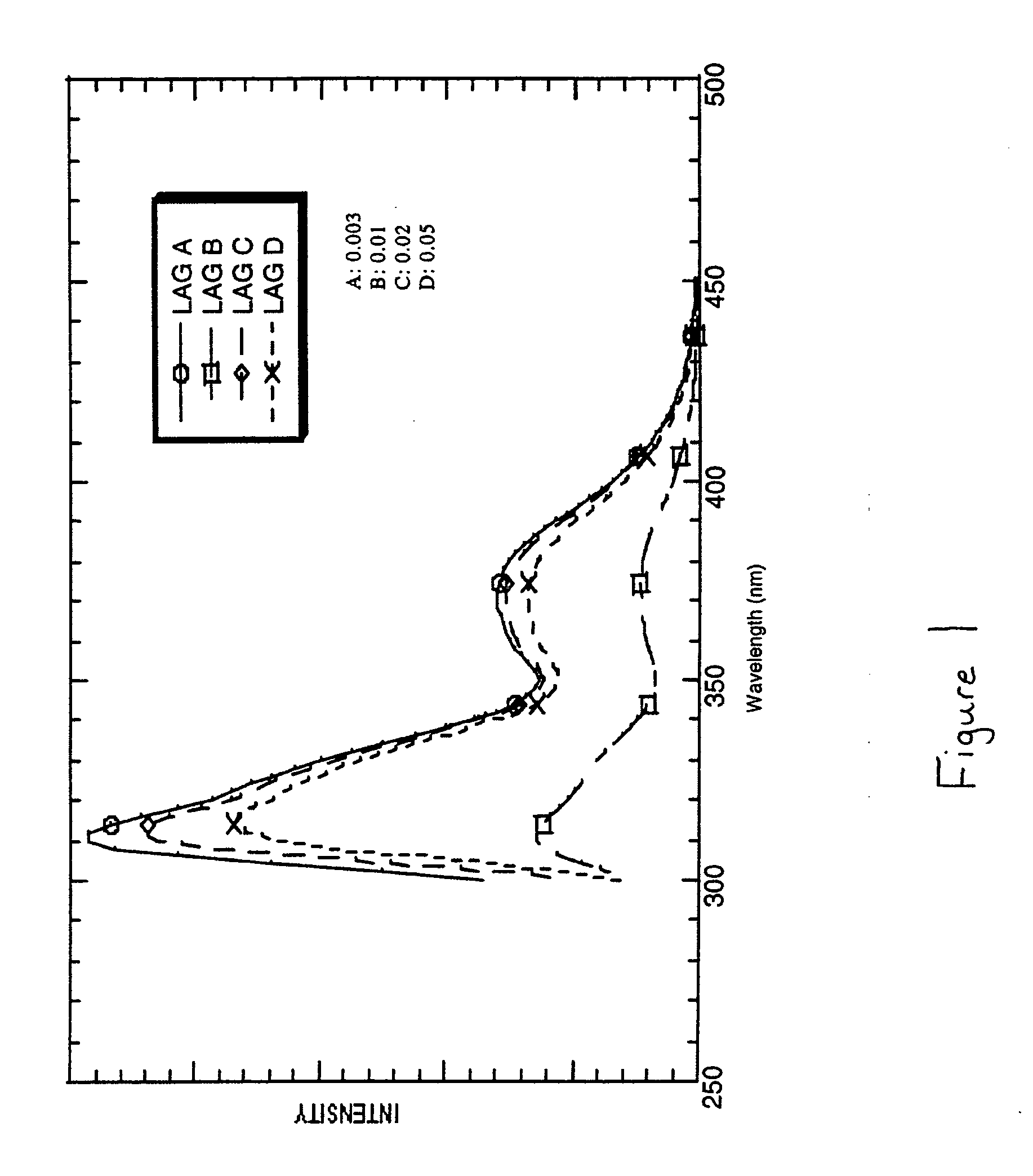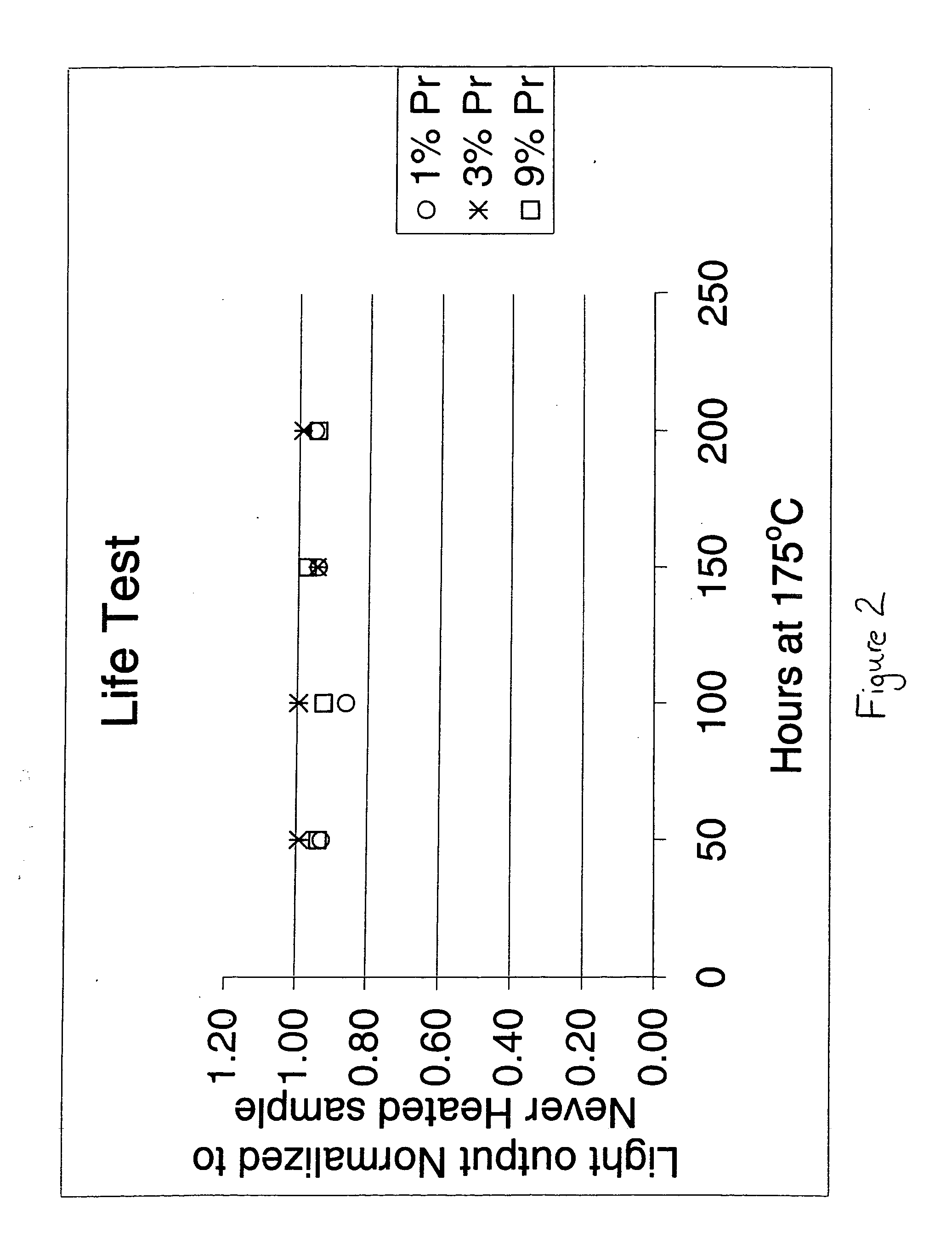Ultraviolet emitting scintillators for oil detection
a technology of ultraviolet and scintillator, which is applied in the direction of conversion screens, instruments, nuclear engineering, etc., can solve the problems of poor light yield under gamma ray excitation, harsh use conditions, and inability to use scintillator materials
- Summary
- Abstract
- Description
- Claims
- Application Information
AI Technical Summary
Problems solved by technology
Method used
Image
Examples
Embodiment Construction
[0016] An aspect of the present invention is directed to ultraviolet-emitting scintillator materials for use in oil well drilling applications in harsh, down-hole environments where shock levels may be near 250 gravitational acceleration (G) and / or temperatures may approach or exceed 175° C. Another aspect of the invention is directed to an ultraviolet-emitting scintillator material coupled to a radiation detector.
[0017] The ultraviolet scintillator material according to exemplary embodiments of the present invention generally has a short decay time and little efficiency drop at elevated temperatures. The ultraviolet scintillator material comprises a cubic garnet host doped with an activator. The scintillator material may be a polycrystalline ceramic formed by sintering phosphors of the scintillator material. Alternatively, the scintillator material may be a single crystal formed from such known techniques as the Czochralski method. Light scattering within the cubic garnet host may...
PUM
 Login to View More
Login to View More Abstract
Description
Claims
Application Information
 Login to View More
Login to View More - R&D
- Intellectual Property
- Life Sciences
- Materials
- Tech Scout
- Unparalleled Data Quality
- Higher Quality Content
- 60% Fewer Hallucinations
Browse by: Latest US Patents, China's latest patents, Technical Efficacy Thesaurus, Application Domain, Technology Topic, Popular Technical Reports.
© 2025 PatSnap. All rights reserved.Legal|Privacy policy|Modern Slavery Act Transparency Statement|Sitemap|About US| Contact US: help@patsnap.com



